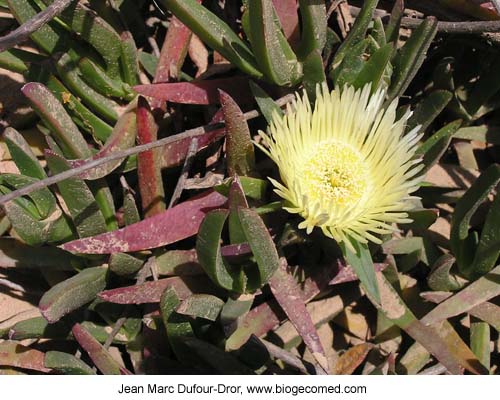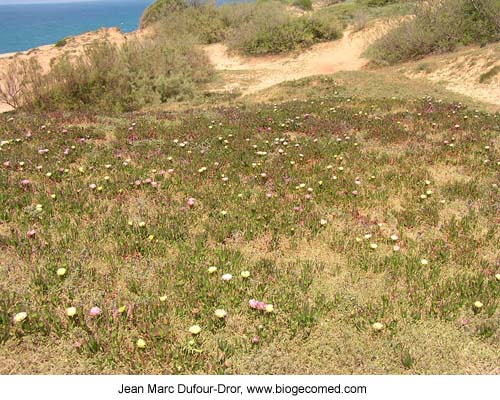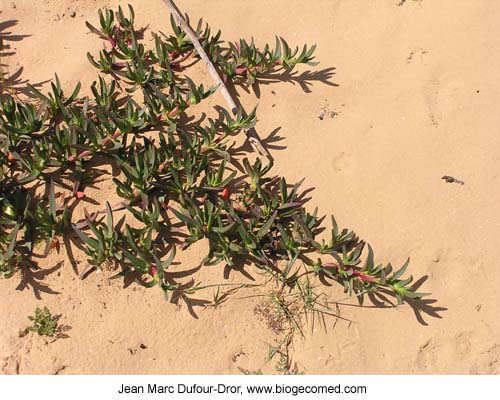|
General
Carpobrotus edulis
(L.)N.E.Br.
Aizoaceae
Life form: Succulent perennial
En: Hottentot fig., Fr: Griffes de sorcière
Provenance: Southern Africa

Distribution in Israel
A large population of
Carpobrotus edulis has been reported in the 'Sharon shore'
National Park, between Tel-Aviv and Netanya. A smaller but apparently
developing population has been reported in the 'Na'aman estuary'
Nature Reserve, south to Akko, as well as in the 'Achziv' National
Park in western Galilee.
Carpobrotus
edulis
invading the sand dunes in the Sharon shore National Park

Proliferation status
The Hottentot fig is
an 'invasive' alien according to Richardson et al. (2000)
Carpobrotus edulis in Israel
The species has been
introduced in Israel for ornamental purposes. It is still currently
used in public gardens. The date of introduction remains uncertain.
The Hotentot fig invades sand dunes as well as rocky cliff habitats.
It forms a thick mat that displaces native vegetation and prevents
the establishment of local species.
So far, no control programs have been elaborated in Israel, in
order to remove the already established populations.
Considering its proliferation in other Mediterranean countries,
the species is likely to infest most of the remaining natural
areas along the shore, in the coming years.

Control
Mechanical removal is
effective providing the roots are removed, otherwise resprouting
occurs. Chemical control consists mainly of spraying infested
areas with glyphosate.
References
Albert M.E. (1995) Portrait
of an invader II: the ecology and management of Carpobrotus
edulis. California Exotic Pest Plant Council, CalEPPC News
1995:4-6.
Suehs C.M., Medail F. & Afre
L. (2001) Ecological and genetic features of the invasion by
the alien Carpobrotus plants in Mediterranean islands
habitats. In: Brundu G., Brock J., Camarda I., Child L. &
Wade M. (eds) Plant invasions:species ecology and management.
Backhuys Publishers, Leiden, pp.145-158.
Vilá M. & Gimeno C.M.
(1998) Fitness of invasive Carpobrotus (Aizoaceae) hybrids
in coastal California. Ecoscience 5:191-199. |
